Introduction
Digital immortality is generally defined as the continuation of an active or passive digital presence after death. As people establish online identities, the likelihood that their digital presences will persist beyond their death increases. There are many ethical and moral implications associated with this idea. Does this mean that, one day, in the not too distant future, we may be able to transfer our minds into robots and artificial intelligence systems? Essentially it almost appears as some post-humous persistence of the human soul, or at least part of it, something of an oxymoron in itself. Is the originator in question truly dead or somewhat alive? What will be the consequences this will have on our relationship with the perceived finality of death?
Exploration
The picture below was taken in October 1927 at the Fifth Solvay International Conference on Electrons and Photons, where the world’s most notable physicists met to discuss the newly formulated quantum theory.
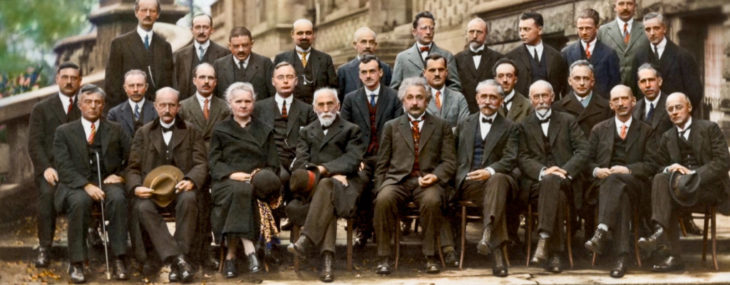
The leading figures were Albert Einstein and Niels Bohr. Seventeen of the twenty-nine attendees were, or to be, Nobel Prize winners, including Marie Curie, who alone among them, had won Nobel Prizes in two separate scientific disciplines. In our exploration, the parti was the question, If we would have a chance, who would we like to ‘resurrect’? Maybe some of the most influential people in science who all in one way or other contributed to the development of such tools?
Method
The approach would be informed by a number of AI tasks, firstly, animating the Fifth Solvay Conference photo, using AI to narrate the story of this particular conference, blending the animation with text-to-voice strategies. Additionally, the background music would be created using another AI method and lastly, creating generic background stories related to the event and personalities involved. Ideally, the process would culminate in the scientists telling their own stories, and in essence, mark their induction into digital immortality.
1 Animate the photos
The animation of the Solvay Conference photo, and the individual scientists frames was done using MyHeritage, an online genealogy platform with web, mobile, and software products and services, introduced by the Israeli company MyHeritage in 2003. Users of the platform can obtain their family trees, upload and browse through photos, and search through over 14 billion historical records, among other features including photo story teller and photo repair.
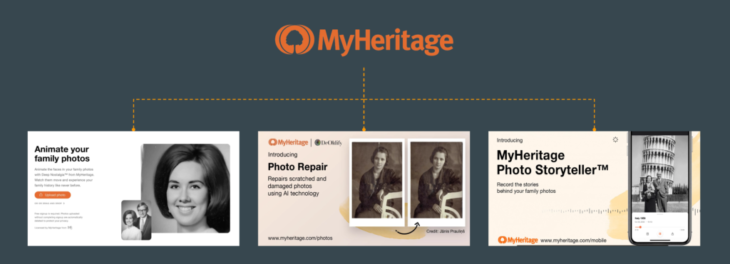
2. Story Generation
The narrative was created using Copy.ai; a neural network that generates text based on an initial text input.
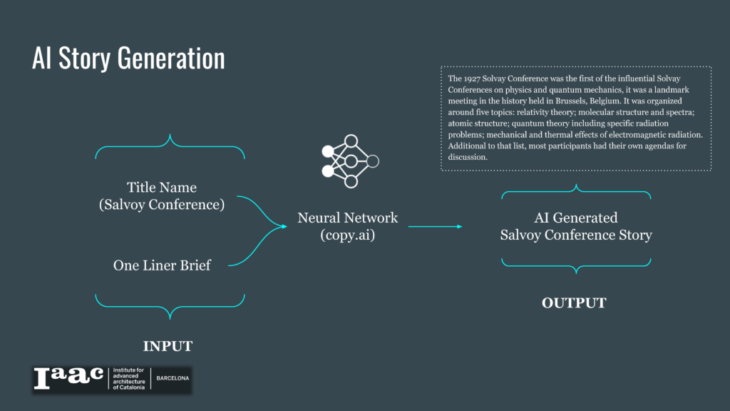
3. Voice Generation
The text-to-voice service Stream Speak was then used to take all the text generated by Copy.ai and generated the voice-over scripts which were then synchronised with the animated media from the earlier steps.
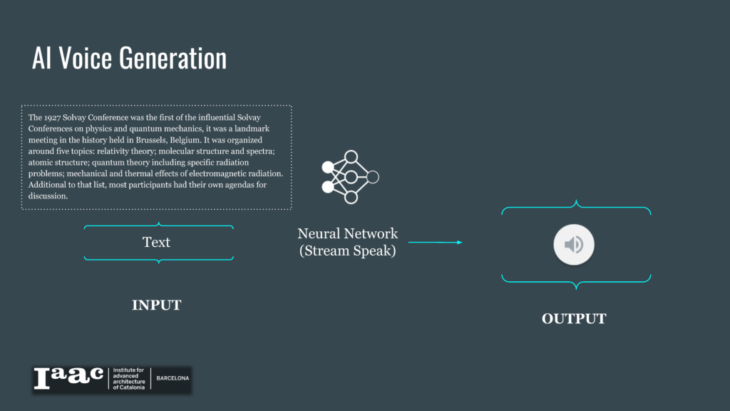
4. Soundtrack Generation
The background music was explored on two fronts, the first method was inspired by the work of Sigurdur Skuli, based on generating classical piano music using a recurrent neural network (LSTM) trained on classical piano MIDI files. This approach has been explored by several other scholars [1] to see the possibilities of neural networks in predicting musical patterns. The second method was employing a readily available service, AIVA (Artificial Intelligence Virtual Artist), to generate a soundtrack without directly engaging with the code.
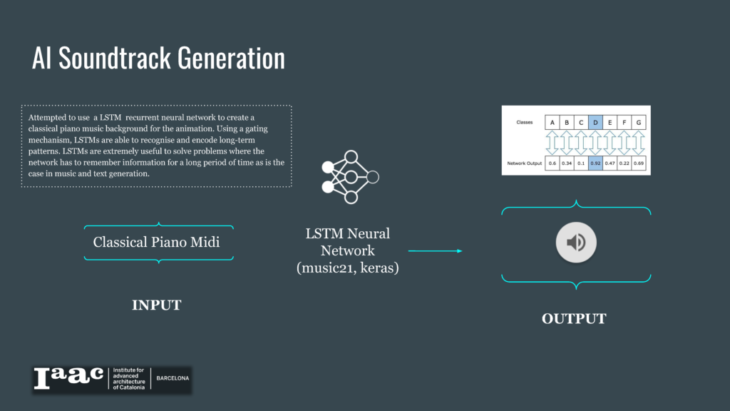
For the first method, music21, a Python toolkit used for computer-aided musicology, was used to encode and decode the music MIDI files to musical notation. Keras was used to create and train the LSTM model. The second method was less hands-on and only involved uploading an input music file which AIVA would then build from, to create a new music file. The output music files were then added to the project as background tracks to check which ones would sound better when merged with the picture and voice.
Scientists Compilation
The compilation from all AI tools was done using the individual scientists narratives and the following results were obtained:
Final Compilation
Lastly, the Solvay Conference compilation was done, and the result can be seen below.
</p>
Conclusion
After creating the digital profiles of the scientists in this study, the process provoked thoughts around the open questions related to the concept of digital immortality. The legal hurdles linked to privacy, and the implications of a persistent existence beyond natural death point towards an ethical and legal Pandora’s box [2]. Others still insist though that digital immortality is just a ruse, unlikely to have any significant legal impact regardless of associated media assumptions and hyperbole.[3] The possibilities that digital immortality presents are interesting and also worrisome, with the added unknown being how properly digital immortals can learn and potentially evolve.
References
https://www.myheritage.com/
https://www.copy.ai/
https://bigspeak.ai/
https://towardsdatascience.com/how-to-generate-music-using-a-lstm-neural-network-in-keras-68786834d4c5?gi=ac77e87d9385
https://medium.com/@alexissa122/generating-original-classical-music-with-an-lstm-neural-network-and-attention-abf03f9ddcb4
https://www.aiva.ai/
https://www.researchgate.net/publication/348563212_Scientific_Relevance_and_Future_of_Digital_Immortality_and_Virtual_Humans
https://www.researchgate.net/publication/325429129_The_ethics_and_impact_of_digital_immortality
Deep Nostalgia is a project of IAAC, Institute for Advanced Architecture of Catalonia developed in the Master in Advanced Computation for Architecture and Design 2021/22 by
Students: Gerald Mandevhana, Hanna Lakk, Sidhant Choudhary and Mansoor Awais
Faculty: Mark Balzar and Zeynep Aksoz